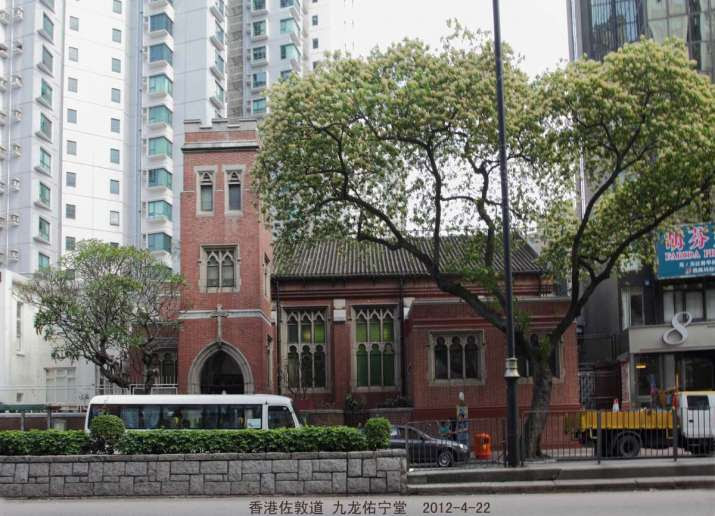By Shyamal Sinha

Tung Lin Kok Yuen is a Buddhist nunnery and educational institution located at No.15 Shan Kwong Road in Happy Valley, Hong Kong. Founded in 1935 by Lady Clara Ho-Tung, it is home to approximately 30 nuns and 50 lay devotees.
It is the only seminary for Buddhist nuns in Hong Kong and provides an 8-year curricular program in Mahayana Buddhism.
Hau Wong or Hou Wang (Chinese: is a title that can be translated as “Prince Marquis” or “Holy Marquis”. It is not any one person’s name.Hau Wong refers usually to Yeung Leung-jit a loyal and courageous general. Despite his failing health, he remained in the army to protect the last emperor of Southern Song Dynasty when he took refuge southwards in Kowloon.
The Antiquities Advisory Board (AAB) of Hong Kong has designated two Buddhist temples—Tung Lin Kok Yuen (TLKY) Temple on Hong Kong Island and Yeung Hau Temple on Lantau Island—as monuments under the Antiquities and Monuments Ordinance, along with a Christian landmark—Kowloon Union Church.
“The Antiquities and Monuments Office considers that with their significant heritage value . . . the three historic buildings have reached the ‘high threshold’ to be declared as monuments,” said a representative of the AAB after the meeting in June. “Consent . . . has been obtained from the respective owners.” (South China Morning Post)
Installed in 1976, the AAB is a constitutional body of the Hong Kong government that evaluates old buildings for designation as monuments based on their historical or architectural merit. According to AAB chairman Andrew Lam: “Heritage is the fruit of a place’s culture and history. It not only reflects the historical facts but also carries our emotions. And the work of the Antiquities Advisory Board relies on professional judgment as well as public knowledge and awareness of the importance of heritage.” (Antiquities Advisory Board)

Located in Happy Valley on Hong Kong Island, TLKY was founded in 1935 by Lady Clara Ho Tung (1875–1938) and her husband, the prominent businessman and philanthropist Sir Robert Ho Tung (1892–1956). TLKY contains an ancestral hall, Dharma hall, dining hall, lecture theater, library, sutra hall, and dormitories for monastics. The temple also houses a valuable collection of calligraphy and Chinese couplets. The temple building shows the influence of Western engineering of the time combined with elements of traditional Chinese architecture, with its flying attics, brackets, and glazed tile roofs. TLKY is considered one of the more prominent Buddhist temples in Hong Kong and serves as a center for the Buddhist community and a place of education for monastics.
Thought to have been build in 1699, Yeung Hau Temple is the oldest temple in Tai O, a fishing village to the south of Lantau Island. The temple consists of two halls connected by a roofed over courtyard that forms an incense tower. The ridge of its roof is decorated with ceramic figures portraying Chinese folk stories.

AAB executive secretary Susanna Siu Lai-kuen said that although all three buildings are privately owned, the AAB would oversee the maintenance and protection of the buildings now that they are listed monuments. If the owners want to carry out any maintenance or reconstruction work, they will need to seek permission from the AAB.
“That I can be part of this milestone is thanks to the Three Jewels [the Buddha, the Dharma, and the Sangha],” TLKY’s abbot Ven. Tsang Chit told Buddhistdoor Global.* “I feel so fortunate that TLKY has this endorsement, but it’s important to remember that TLKY is not just a monument. It is a living structure and organization.”











